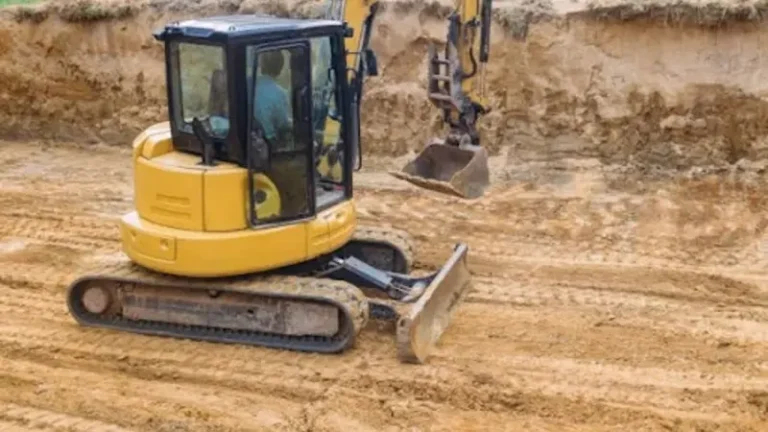Australian earthmoving companies play a crucial role in construction and infrastructure development, but their operations also have the potential to significantly impact the environment. From altering landscapes to managing waste and emissions, these companies must navigate a complex set of environmental challenges. Fortunately, many earthmoving companies in Australia are increasingly committed to minimizing their environmental footprint.
They achieve this through the adoption of sustainable practices, compliance with stringent regulations, and the use of advanced technology. Understanding how an earthmoving company manages environmental impact can provide valuable insights into the industry’s evolving practices and their importance in preserving Australia’s natural environment. Here are the ways that Australian earthmoving companies manage environmental impact.
1. Adherence to Environmental Regulations
One of the primary ways an earthmoving company in Australia manages its environmental impact is by adhering to the country’s stringent environmental regulations. The Australian government, both at the federal and state levels, has established comprehensive laws and guidelines aimed at protecting the environment from the potential harms associated with construction and earthmoving activities. These regulations cover a wide range of issues, including land clearing, waste management, water conservation, and air quality.
Earthmoving companies must obtain the necessary permits before commencing any project, ensuring that their operations comply with these regulations. For instance, the Environmental Protection and Biodiversity Conservation Act 1999 (EPBC Act) plays a significant role in overseeing projects that might affect the environment, particularly in areas of national environmental significance. Compliance with such regulations not only helps protect the environment but also prevents legal repercussions that could arise from non-compliance.
2. Sustainable Land Management Practices
Earthmoving activities often involve significant alterations to the landscape, which can lead to soil erosion, habitat destruction, and changes in water flow patterns. To mitigate these impacts, earthmoving companies in Australia employ sustainable land management practices. This might include minimizing the amount of land disturbed during a project, preserving topsoil for future rehabilitation, and carefully planning land clearing to avoid damaging sensitive ecosystems.
Moreover, many earthmoving companies are now incorporating revegetation and rehabilitation strategies into their projects. After the completion of earthmoving activities, these companies work to restore the site to its natural state or to a condition that supports the local ecosystem. This can involve replanting native vegetation, stabilizing soil to prevent erosion, and creating habitats for wildlife. These practices help ensure that the environmental impact of earthmoving is not only minimized during the project but also mitigated in the long term.
3. Waste Management and Recycling
Waste management is another critical area where earthmoving companies manage their environmental impact. Earthmoving projects generate significant amounts of waste materials, including soil, rocks, vegetation, and construction debris. To reduce the environmental burden, many earthmoving companies in Australia have implemented robust waste management systems that prioritize recycling and the responsible disposal of waste.
For example, soil and rock materials that are removed during excavation are often reused in other parts of the project, reducing the need to extract and transport new materials. Vegetation cleared from a site can be mulched and used in landscaping or erosion control. In addition, companies are increasingly focusing on separating recyclable materials from construction waste, ensuring that these materials are diverted from landfills and reused in other projects.
4. Reducing Carbon Emissions
The operation of heavy machinery, such as bulldozers, excavators, and trucks, is a significant source of carbon emissions in earthmoving projects. To address this, Australian earthmoving companies are adopting various strategies to reduce their carbon footprint. This includes investing in more fuel-efficient machinery, using alternative fuels like biodiesel, and optimizing project planning to minimize the time equipment spends idling or traveling between sites.
Additionally, some earthmoving companies are exploring the use of electric or hybrid machinery, which produces fewer emissions than traditional diesel-powered equipment. By reducing carbon emissions, these companies contribute to the broader effort to combat climate change while also lowering operational costs associated with fuel consumption.
5. Water Conservation and Management
Water is a vital resource, and its management is a significant concern in earthmoving projects, particularly in Australia, where water scarcity is a persistent issue. Earthmoving companies manage water resources carefully to prevent contamination and overuse. This includes the implementation of erosion and sediment control measures to prevent polluted runoff from entering local waterways.
Water conservation techniques, such as the use of recycled water for dust suppression and machinery cleaning, are also becoming more common. By managing water use efficiently, earthmoving companies reduce their impact on local water resources and contribute to the sustainability of the environment.
6. Use of Advanced Technology
Technology plays a crucial role in helping earthmoving companies minimize their environmental impact. Geographic Information Systems (GIS), drones, and 3D modeling tools enable precise project planning, reducing land disturbance and confining work to designated areas. GPS-equipped machinery with automated controls operates more efficiently, cutting fuel use, emissions, and environmental impact.
Summary
Earthmoving companies in Australia are adopting sustainable practices to manage their environmental impact. By following regulations, reducing waste, lowering emissions, and conserving water, they support infrastructure development while protecting the environment. Through innovation, they demonstrate that economic growth and environmental stewardship can coexist.Visit World Fame Magazine for more details.
